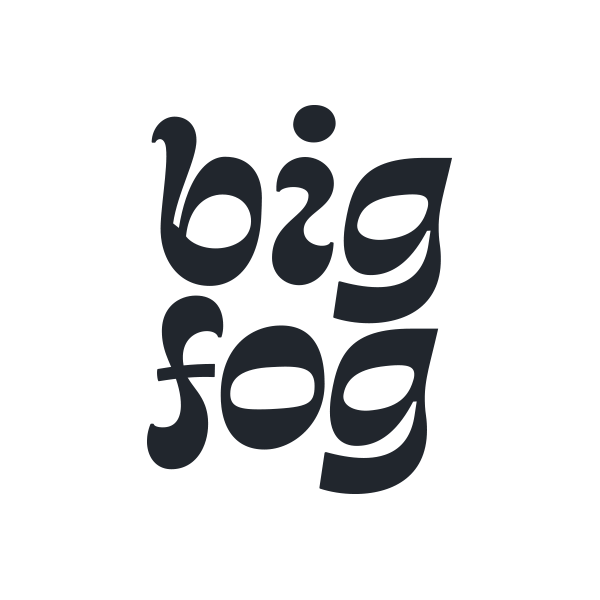
by Brian Dove July 19, 2023
A new logotype for a long-standing storefront
In June of 2022, we were approached by the new owners of Murphy Beverage Co. about rebranding their shop. The specialty beer and wine shop has been a fixture on the downtown mall in Winchester, VA since 1997. The new owners, Heidi and Chad, purchased the business from its original owners. Murphy Beverage had no official logo or brand guidelines in place, so they wanted to craft an identity that honored their store’s legacy while giving it a more modern look. Our brand identity project started with explorations around their logotype. Murphy Beverage had a few different logotypes out in the world on their website, business cards, and a sandwich board outside the shop. We explored a few different options based on these references and feedback the client provided in our Brand Questionnaire (part of our onboarding process that helps us get to know our clients’ goals and vision before we get started).

The cutting room floor: some of our initial explorations for the new logotype.
Ultimately, Heidi and Chad were most drawn to what we were referring to as the “Murphy Legacy Logo”. This was a logotype based on lettering found on an old business card and the sandwich board that has sat outside of the Murphy Beverage storefront for the last couple of decades. The lettering had the perfect combination of whimsy and old-world charm that felt aligned with the goals of the new owners. They wanted to convey expertise without seeming pretentious—a shop that you know has top notch wine and beer, but isn’t snobby about it.

Left: former Murphy Beverage Co. business card. Right: our first sketch of the “Legacy Logo”
While the original logo evoked those feelings, it needed some fine tuning. The visual weight (how light or dark each letter appears), baseline (where the bottom of the letterforms sit), descender length (how far down letters like “y” and “p” extend below the baseline), and x-height (the height of the lowercase in relation to the cap height) all needed to be refined. In text typefaces, a lower x-height helps distinguish the lowercase from the capitals. In a logotype, a higher x-height reduces negative space, making the logo as a whole feel like a unified shape. The same logic can be applied to the descenders; a text face would have longer descenders for legibility, while I opted for a shallow descender length here in favor of a more cohesive overall shape.
We wanted to refine these elements of the lettering while still maintaining some of the hand drawn qualities that we loved about the original. The initial sketch of the new logo was drawn by hand in pencil, refined with tracing paper, traced in Sharpie, and ultimately Image Traced in Adobe Illustrator. For those unfamiliar, the Image Trace tool converts an image into (admittedly rough) vector outlines that can then be manipulated. This was a quick way to create a proof of concept for this logo, but I knew ultimately I would redraw it in my type design software of choice, Glyphs.

Top: smudgy pencil sketch. Bottom: black Sharpie on tracing paper which was then Image Traced in Adobe Illustrator.
Once we got a thumbs up from the client to push this direction further, I worked on redrawing this lettering in Glyphs while Valerie, the other half of Big Fog, worked on the illustrated elements. Side note: learning the basics of drawing in a type design application is immensely helpful in creating a custom logotype. The degree of precision that is possible in a professional type design software is approximately one million times better than what you can achieve in Adobe Illustrator. (Some folks can do incredible things with Bezier curves in Illustrator, but I am not one of them.)
While I did completely redraw the logotype in Glyphs, it lost some of the rustic, hand drawn charm that we loved about it. We tried a few different approaches to remedy that, but ultimately ended up with a process that pushed against most of my type design-y instincts: I took the crisp letters from Glyphs, digitally blurred ‘em, image traced that, then brought those outlines into Glyphs for a tune up. This is (in my opinion) bad practice for making a typeface, but hey, we’re making a logo here folks! The result had just enough of that rough, handmade feeling while also feeling sturdy and cohesive.
The new logotype was eventually paired with Tuppence from Delve Fonts and flanked by illustrations Valerie made, which were also influenced by that original business card and sandwich board. Murphy Beverage rolled out their new look online earlier this year with a new website designed and built by Web Strategies. We love walking by and seeing this logo on their brand new sandwich board, sitting in the same place as the one that inspired it.

